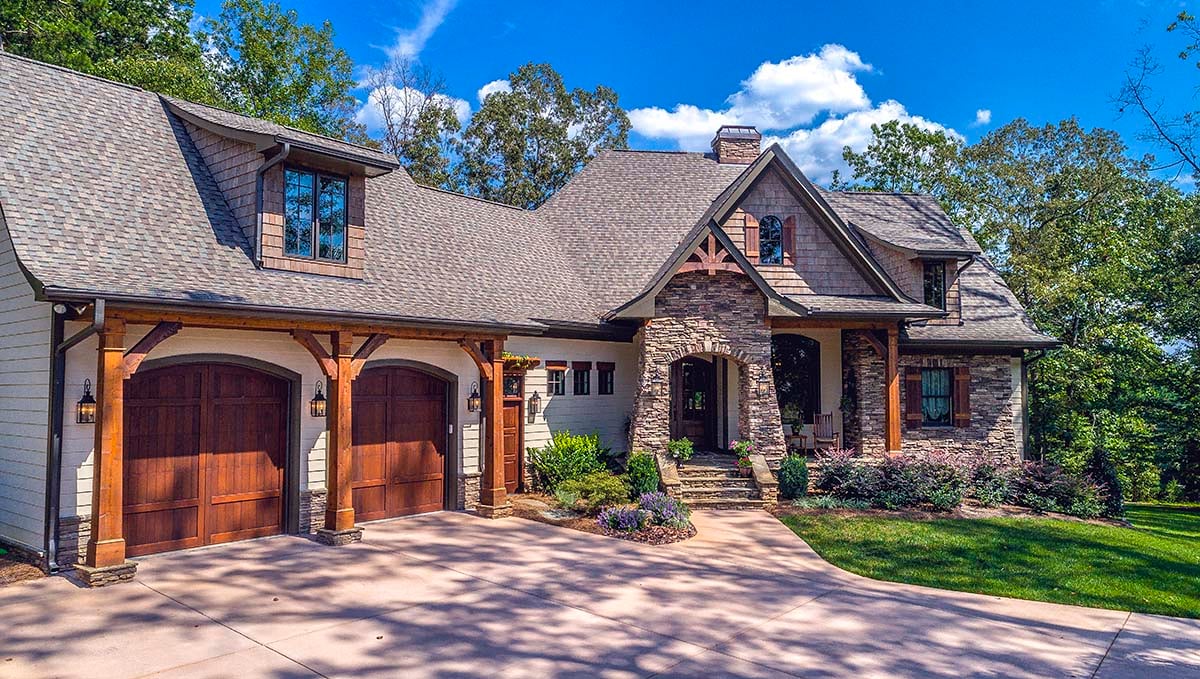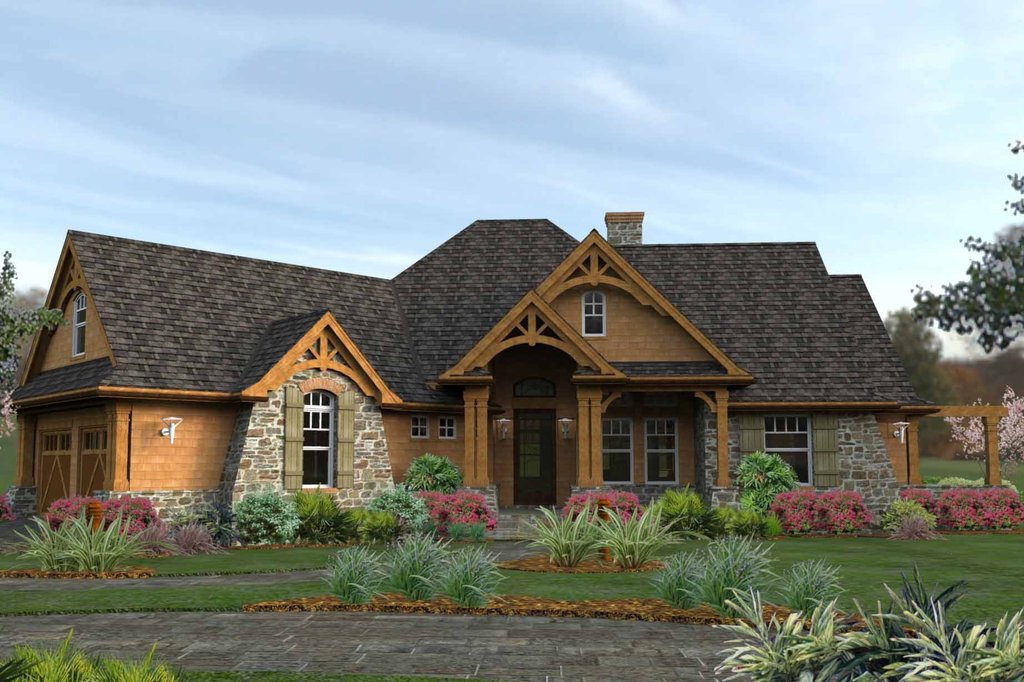Table Of Content

Many of these homes are bungalow-style and are known for their natural materials, cozy interiors, and wide porches. They're trendy in California and the Midwest and appeal primarily to those who love vintage homes. The origin of the bungalow is not based on the Arts & Crafts movement and comes from a popular 17th century Bangladeshi home style. And while the prairie-style buildings of Frank Lloyd Wright incorporated many of the earthy, natural characteristics of craftsman architecture, none of them could be called a bungalow. You'll likely find an open living room that connects to a dining or multi-use space, and a smaller kitchen toward the rear of the house.
Prominent Black Architect Paul Revere Williams' Craftsman Home Is Now A Historical Monument - LAist
Prominent Black Architect Paul Revere Williams' Craftsman Home Is Now A Historical Monument.
Posted: Thu, 17 Feb 2022 08:00:00 GMT [source]
Pros and Cons of Craftsman-Style Houses
Ornate Victorian Revival style was fashionable between the mid-1800s and the early 1900s. Though ornamentation is a hallmark of Victorian architecture, kitchens were utilitarian, with less-elaborate millwork and furniture pieces instead of wall cabinets. Most fantastic of all are the hillside houses made possible by engineering and genius design. Pierre Koenig’s Case Study Houses are like angular clouds of glass and light and air, floating above the glittering landscape. And John Lautner’s 1960 “Chemosphere” house, which I have visited, is a miracle of invisible engineering and visible imagination. The Mission Revival style in particular lasted only maybe a quarter-century, until World War I. To my way of thinking, it is not attractive, with that arched roofline like a dromedary’s hump.
Are Craftsman-Style Homes Popular?
Coverage expanded to art and literature, furniture and design, and even some political issues. Around this time, Stickley began printing architectural designs for houses that evoked the movement. The ideas these cutting-edge creatives embraced quickly spread through Europe and to America, which had its own set of leaders promoting a return to a simpler lifestyle than the one idealized by Victorian style-makers. Masterclass describes how original Craftsman houses are usually modest, one or one-and-a-half-story free-standing homes. They look wider than they are tall because of the overhanging roof on the first floor, and the gable (triangle shape) on the upper floor.
Key Elements of Craftsman Style Homes
Arts and Crafts Homes describes how they were summoned by their retired parents to Pasadena, and the two traveled from Ohio to California in 1893. They stopped in Chicago to take in the World's Columbian Exhibition, which featured engineering achievements and structures from around the world. In Southern California, the Pasadena-based firm Greene and Greene was the most renowned practitioner of the original American Craftsman Style.
Some architects of the early to mid-20th century drew inspiration from the midwestern landscape and combined these ideas with craftsman design. The craftsman aesthetic and sensibilities blend into later styles including 1930s Tudor revivals, highly stylized Art Deco and Streamline Moderne of the 1930s and 40s, and mid-century ranches. That said, they can be a bit expensive for the amount of square footage you get. If you’re looking for a lot of living space and many bedrooms and bathrooms, a Craftsman house might not be for you. But if you’re looking for a home that is simple, practical, and interesting, a Craftsman is worth checking out.

Bungalow
They frequently have steeply pitched roofs to help shed snow and moisture, which is common in mountainous areas. To take advantage of the natural views, modern mountain craftsman home designs feature large glass windows and wrap-around porches. When designing these homes, architects pay close attention to the setting to ensure that the home blends seamlessly with the natural environment. Exterior craftsman details include exposed rafters, decorative brackets, and other detailed woodwork around the eaves and porch.
The History of Craftsman Style Architecture
It typically had a work table (having the equivalent purpose of the modern countertop) at which the servants would eat after the family meal was served and the kitchen tidied. The Victorian kitchen had no "proper" place for a family member to sit, eat, or do anything else. Again, as the housewife of the Craftsman era was now preparing the family meals, the Victorian kitchen gave way to one designed as the heart of the family's daily life. The breakfast nook often placed under a window or in its own bay provided a place for the family to gather at any time of the day or evening, particularly while the food was being prepared. The most popular and affordable of the craftsman homes were the bungalows – and in fact today many people are seeking this type of classic, quality architecture. The American Arts and Crafts Movement was all about the visibility of handicraft – simplicity, originality, quality, functionality and possibly best of all, the use of local materials, especially stone and wood.
Thanks to extra-large windows, craftsman homeowners can benefit from them by creating window seats also serving as a reading nook. Large windows also allow plenty of natural light making the space look larger as well as offering impressive views. Four Square Craftsman-style homes are a larger version of original Craftsmans, which tended to be modest, single-story residences. They typically feature four rooms on the first floor, and four rooms on the second (hence the name). Found all across the country, these boxy two- or two–and-half story properties do feature many of the same traditional characteristics, though, including columns and low-incline roofs. Craftsman houses typically feature smaller rooms, which are distinctly seen in the layout.
Tapered Columns and Pedestals
Modern Bungalow illustrates how traditional Craftsman-style color schemes are rooted in the natural world, celebrating simple beauty and quality craftsmanship. Exterior paint colors are drawn directly from nature, so the Craftsman style typically presents in earth tones, from browns and beiges to dark greens, and sometimes a touch of brick red. For the interior, picture the colors of fall – rust orange, forest green, olive, goldenrod, cream, deep royal blue, and, of course, wood tones ranging from pale almond to dark oak.
This can be seen in the use of Spanish tile roof shingles, stucco, and arches. Still, a well-maintained original Craftsman will have neutral exterior colors, natural accents, and the signature interior woodworking elements. While late 19th-century Victorian homes showed off the advances of American manufacturing through ostentatious detail and decor, the American Craftsman movement emphasized individualistic, hand-worked goods and buildings. It was a return to the beauty of natural materials and forms, a celebration of manual labor, and an encouragement of personal flair and detail. A Craftsman style home is a small to medium-sized, single family home that usually is a square shape with two stories. The wood joinery and front porch are the most apparent traits of a Craftsman style home, but the design has been adapted to suit homeowners needs since their earliest development in the late 19th century.
The exterior cladding is often made of wood and is in natural colors, even when painted. In contrast, the Craftsman style emphasizes natural materials, exposed wooden beams, and intricate handcrafted details across diverse floor plans. Typical craftsman style house roof colors are naturally brown, green, and red. With a brown roof, ideas for traditional body colors include olive green, dark green, and reddish or lighter 1920s bungalow colors like yellow, orange, and sage green. Most also incorporate Arts and Crafts style light fixtures, which are an integral part of the home’s design rather than an afterthought.
A perfect example of this architectural style can be seen in the design and layout of the Gamble House in Pasadena. A backlash against Victorian opulence, Craftsman architecture arose around 1905, continuing until about 1930. It is characterized by simple, sturdy forms that celebrate hand-craftsmanship, showcasing natural wood elements such as beams, trimwork, and built-ins, and an earth-tone palette. One home style that’s flourished on the architectural evolutionary tree is the Craftsman bungalow, as identifiably Southern California as the Hollywood sign. The most sublime and costly of these is the gem-perfect Gamble House in Pasadena, but thousands of California bungalows fill neighborhoods and towns like South Pasadena. At their best, the bungalows appear to arise from the landscape, in hunkered-down lines with deep, cool porches and stone and wood materials whose own superb construction is ornament enough.
Emily Estep is a plant biologist and journalist who has worked for a variety of online news and media outlets, writing about and editing topics including environmental science and houseplants.
… Contrasts between the Victorian and the contemporary structure are often ludicrous, as when a constructivist garage rubs rooftops with a grotesque gingerbread castle.” Oh, go soak your stringcourse, WPA. Craftsman style house exist all over the United States, with Southern California having more of them than anywhere else. In addition to that, Washington and Oregon as well as some parts of the Midwest also have considerable numbers of Craftsman dwellings. Craftsman houses offer enduring style, high-quality construction, functional layouts, and a connection to nature, making them a sound investment with lasting value and timeless appeal. However, if you’re thinking about buying one of these types of homes, it’s important to think beyond their charming curb appeal and consider the special maintenance that may be required due to their age. If you build one, bear in mind that it could cost more than a contemporary style, especially if you want to give it the same loving attention to detail, material and craftsmanship.
The Chicago bungalow is another regional craftsman variation that is prominent in midwestern cities like Chicago. This style often features brick in their construction, which sets them apart from craftsman homes that are predominantly wood or stucco. Quintessential craftsman styles include the California Bungalow, popularized by Henry and Charles Greene and heavily influenced by both Bangladeshi and Japanese architecture. This style of home can be found throughout the U.S., though the earliest builds were in Pasadena, CA. And, though the movement celebrated handicraft, prefabricated home kits in the craftsman-bungalow style were available from Sears Company and others.
While many Americans are familiar with the term “craftsman,” knowing the key features of this architectural style can help you determine a true craftsman house. Movements of any nature — whether political, artistic, or popular — don't just appear out of nowhere. They're typically a response to the preceding movement and the social and economic conditions of the time. Its roots are deeply embedded in the mid-19th century British Arts and Crafts movement, a way of thinking that worked its way to the U.S., where outspoken advocates further catalyzed the movement. These voices and ideas were embraced en masse by the general population, and so from roughly 1905 to 1920, thousands of Craftsman-style houses were built in the U.S. The Craftsman movement in architecture and design developed in response to the overly-ornate Victorian-era elements.

No comments:
Post a Comment